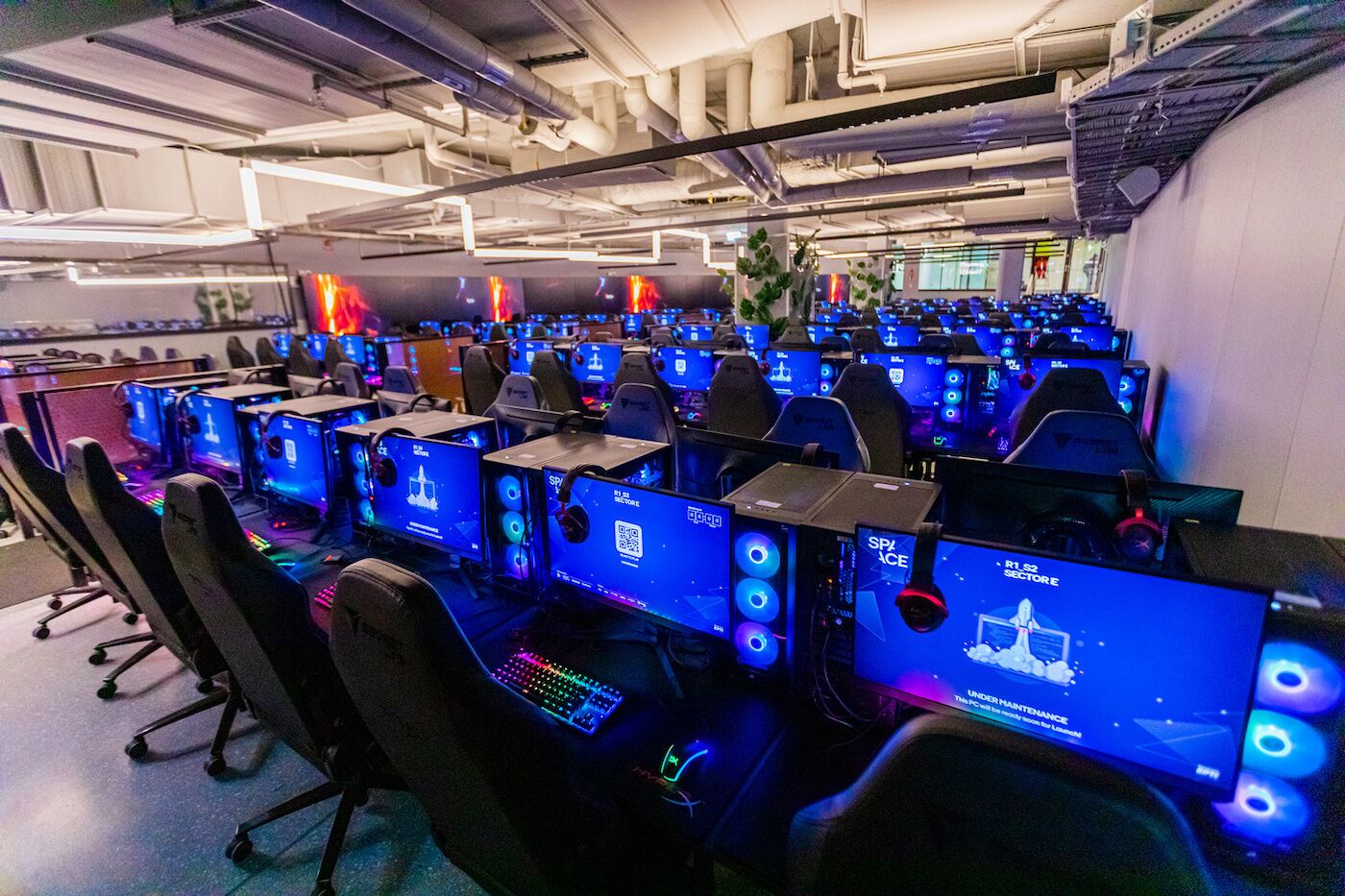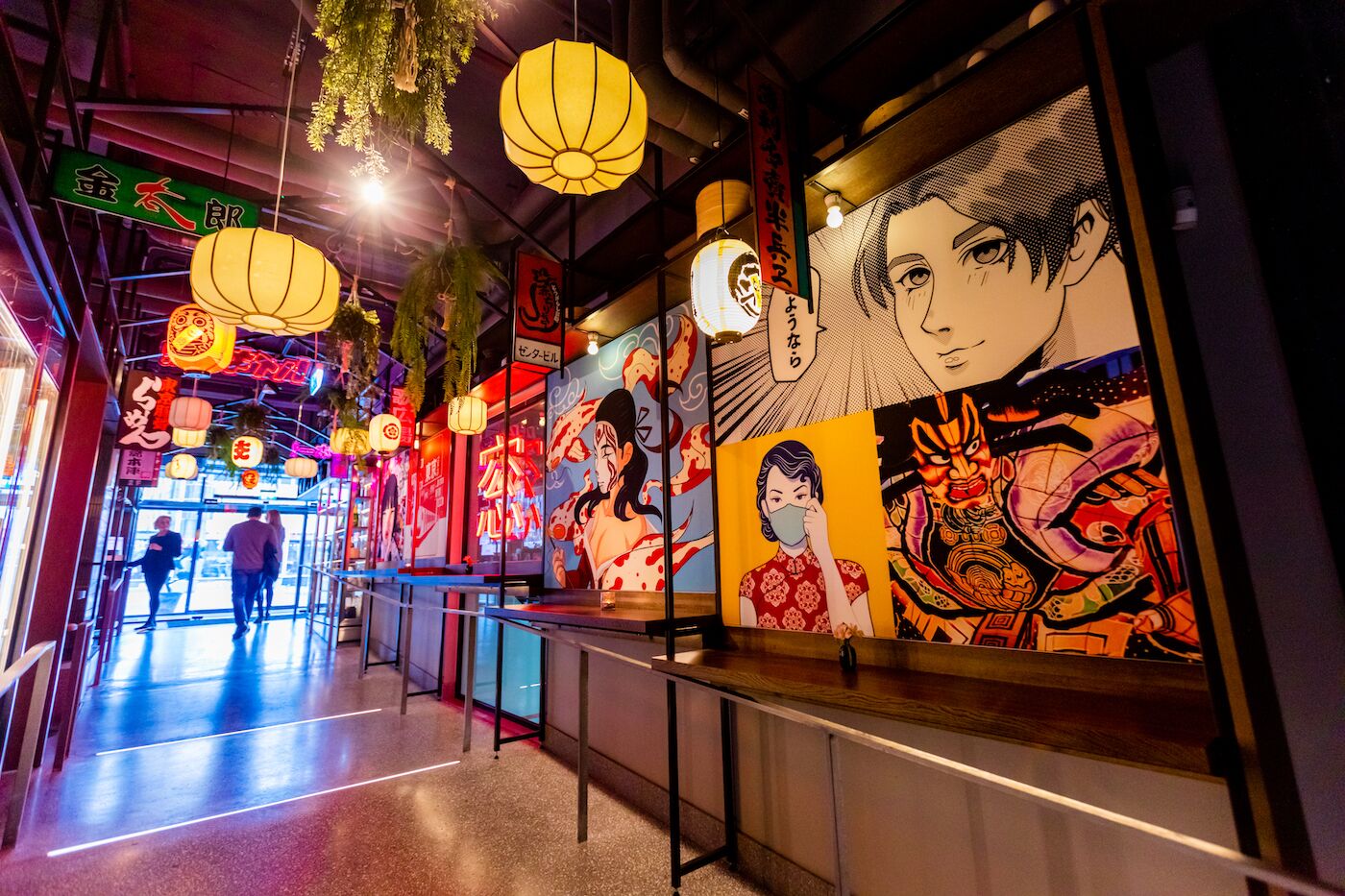Even though gaming has become a $300 billion industry, it still feels most at home in a basement.
Not to confuse the Space gaming center with the concrete walls under your parents’ living room. But the world’s largest gaming center — an 80,000 square foot facility with a bar, cafe, and full-scale performance venue that opened in late 2021 — still sits underground. Its subterranean locale, a floor below street level on Stockholm’s Sergel’s Square, is more cool than counterculture, though. Because this state-of-the art facility is bringing gaming into the family-friendly mainstream.





